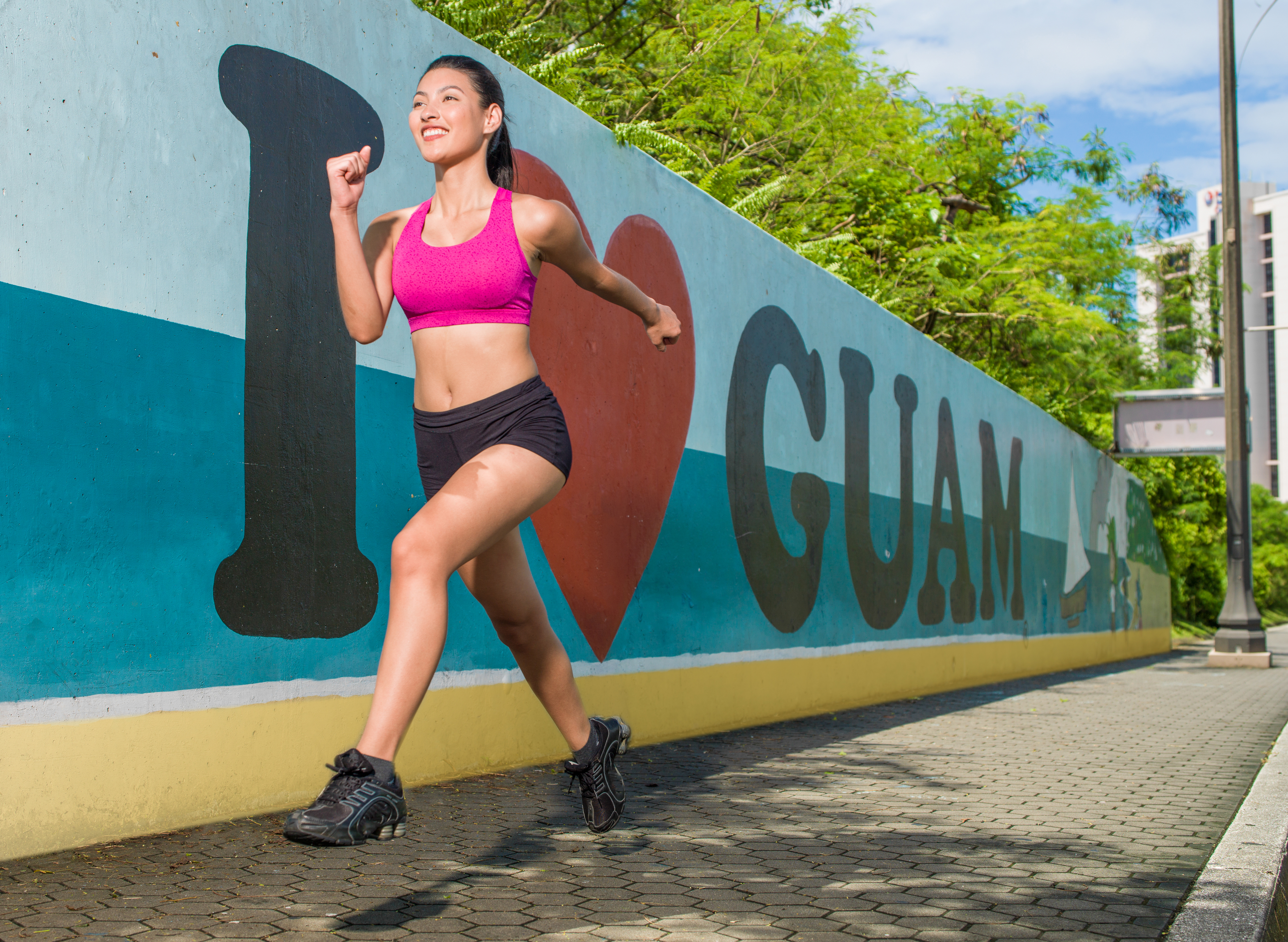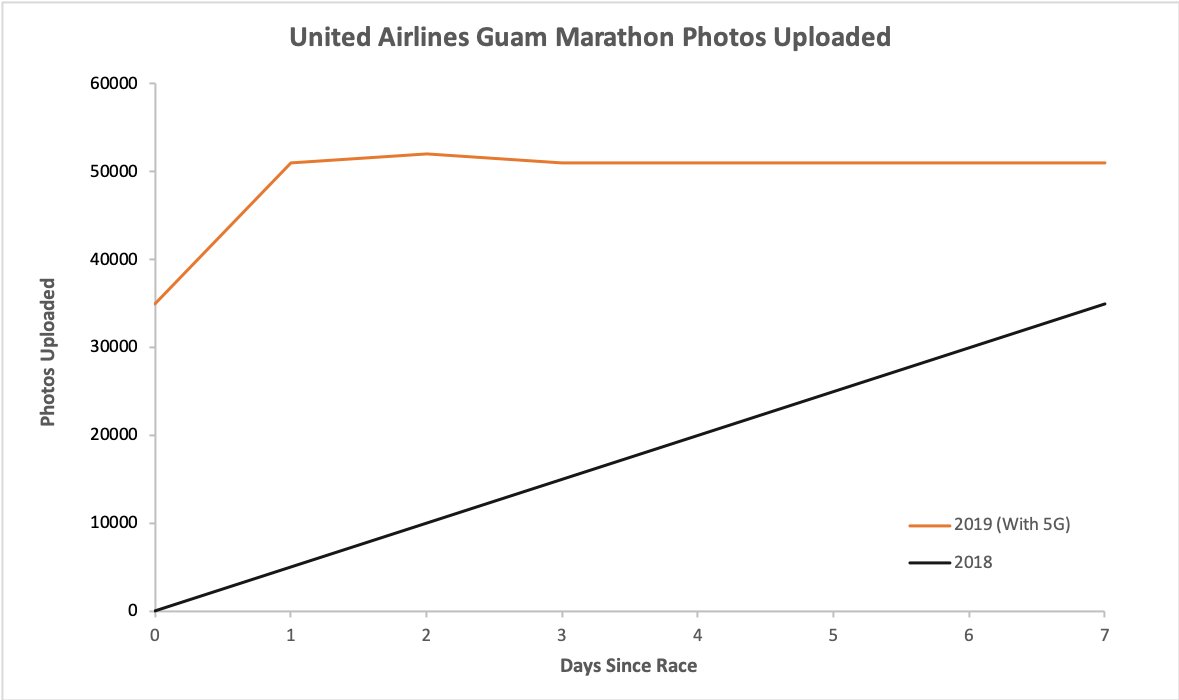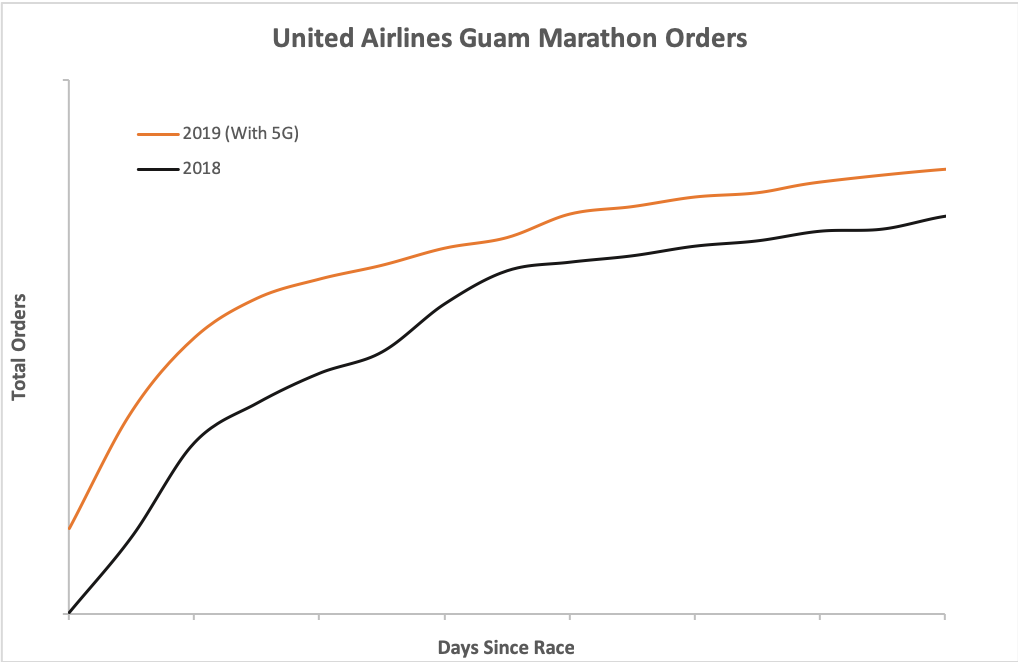FlashFrame and 5G: High Speed Delivers Improved Results
As mentioned in previous blog posts, FlashFrame has been in partnership with NTT DoCoMo for the past two years to bring sports photography software to the Japanese market. Part of our cooperation was centered around DoCoMo’s launch of 5G in Guam and proving out the value of commercial access to 5G networks.

One of the major challenges of marathon photography is getting photos quickly available to participants before interest in purchasing them has expired. FlashFrame’s proprietary algorithms allow us to reduce the tagging turnaround time from weeks to minutes which has shifted our bottleneck from the previously vexing photo-tagging and indexing problem to photography upload, which is limited only by internet speed. This is where the 5G partnership comes into play. By utilizing DoCoMo’s access to 5G wireless internet we hoped to upload a greater number of photos much faster at the 2019 United Airlines Guam Marathon, as compared to the same event in 2018 to determine what kind of material business advantage such a blazing fast network can offer.
5G speeds are unimaginably fast. You should expect your current high-speed internet connection to have an upload/download speed between 10 and 25/mbps which is more than hefty enough to handle some simultaneous Netflix streaming and Instagram scrolling. The 5G connection that was used in Guam was in the range of 1 Gbps or 1000 mbps. Nearly 400x faster than the fastest internet connection you’re reasonably going to use day to day and allowed us to upload photos about as fast our computers could serve them. In fact, the limitation in upload speed wasn’t the network connection, but rather the sea cable that carried information from the tower on Guam to our server in Japan.
The results of 5G access are simply astounding on the upload side. In 2018 FlashFrame photographers uploaded a total of 35,416 photos over the course of about 2 weeks. These trickled in over time as photographers would often set their upload to run overnight and then upload another batch the next day. In 2019 photographers uploaded over 35,000 photos within 2 hours of the race ending. Within 24 hours of the race completion FlashFrame amassed a total of 51,471 photos.

Moving this much information so quickly allowed us to get photos in front of participants in record time. Participants began purchasing photos within an hour after the race and we emailed participants with the official link to photos that evening. Getting the initial email out so quickly allowed us to maximize sales and engagement on the website. In the first 24 hours of the event we had over 30,000 pageviews.
As expected, immediate access to photos resulted in improved sales and engagement. In the first 24 hours of race completion the 2019 event resulted in 190 orders, compared to 2018 which only had 73. This lead continued to hold as well with the 2019 event utilizing 5G was able to produce 10% more orders through the first month as compared to the previous year.

The moral of the story is that getting photos to market as quickly as possible is imperative. Runners are beginning to expect a quicker and quicker turnaround and photographers need to stay nimble to provide modern services. With 5G quickly coming to markets around the world we're excited for a time when photographers get their FlashFrame photos within minutes of their race finish!